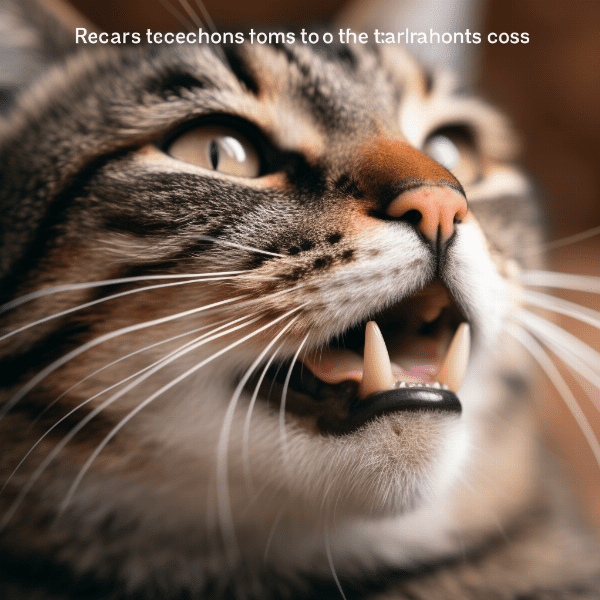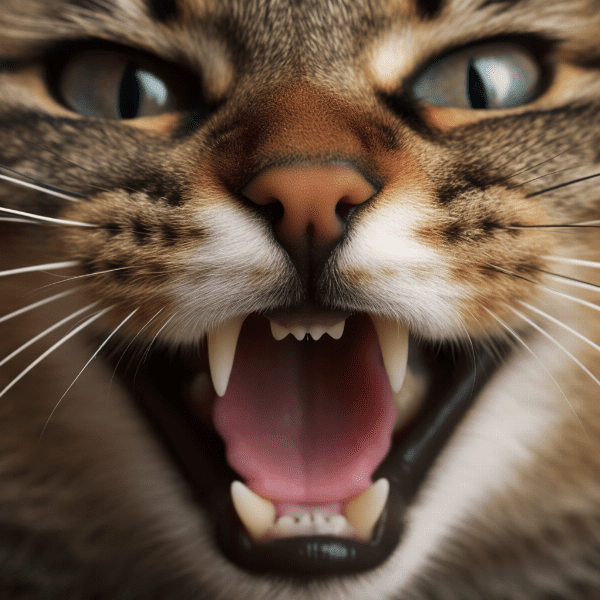Table of Contents
- Understanding Feline Gingivitis
- Causes of Feline Gingivitis
- Symptoms of Feline Gingivitis
- Diagnosis of Feline Gingivitis
- Preventing Feline Gingivitis
- Treatment Options for Feline Gingivitis
- Home Care for Cats with Gingivitis
- Complications of Feline Gingivitis
- When to Consult a Vet for Gingivitis
- Conclusion: Caring for Your Cat’s Dental Health
Understanding Feline Gingivitis
Feline gingivitis is a common condition that affects many cats, especially as they age. It is a form of gum disease that results in inflammation of the gums, and if left untreated, can lead to more serious dental problems.
The Anatomy of a Cat’s Mouth
Before delving deeper into the causes and symptoms of feline gingivitis, it’s important to understand the basic anatomy of a cat’s mouth. Like humans, cats have teeth, gums, and a tongue. However, there are a few key differences to note. For instance, cats have four different types of teeth: incisors, canines, premolars, and molars. They also have a rough tongue that is covered in tiny barbs, which helps them groom themselves and remove debris from their fur.
What is Gingivitis in Cats?
Gingivitis is a type of periodontal disease that affects the gums. It is caused by a buildup of plaque on the teeth, which can eventually lead to the inflammation of the gums. In cats, this condition is especially common and can lead to a variety of dental problems if not addressed promptly.
How Does Gingivitis Develop?
Gingivitis in cats typically develops when there is a buildup of plaque on the teeth. Plaque is a sticky film that forms on the teeth and is composed of bacteria, food particles, and other debris. If this plaque is not removed through regular brushing or dental cleanings, it can eventually harden into tartar. Tartar buildup can cause the gums to become inflamed, which is a condition known as gingivitis.
The Role of Bacteria in Gingivitis
Bacteria play a significant role in the development of gingivitis in cats. The mouth is home to a wide range of bacteria, some of which are harmful and can cause infections or inflammation. When plaque and tartar build up on the teeth, bacteria can thrive and multiply, which can lead to an overgrowth of harmful bacteria in the mouth. This can further exacerbate the inflammation of the gums and lead to more serious dental problems.
Conclusion
In summary, feline gingivitis is a common condition that can have serious implications for your cat’s dental health. Understanding the causes and symptoms of gingivitis is the first step in preventing and treating this condition. By maintaining regular dental cleanings and taking steps to promote good oral hygiene, you can help keep your cat’s mouth healthy and free of disease.
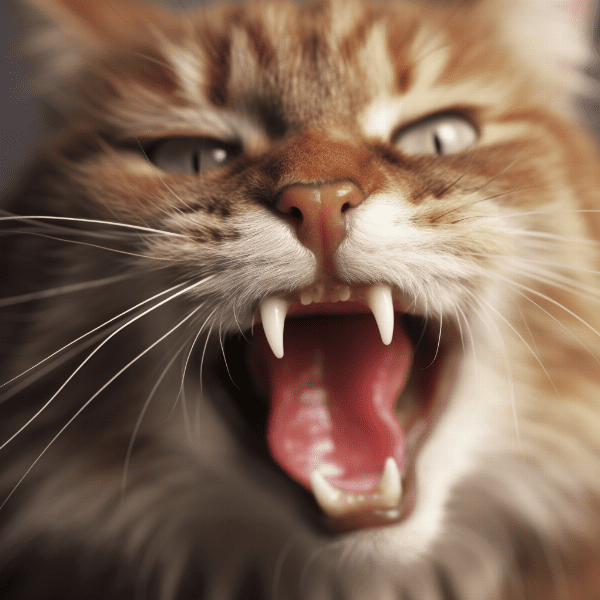
Causes of Feline Gingivitis
Feline gingivitis is caused by a variety of factors, including poor oral hygiene, diet, genetics, and underlying medical conditions. Here are some of the most common causes of feline gingivitis:
Poor Oral Hygiene
One of the most common causes of feline gingivitis is poor oral hygiene. When cats are not provided with regular dental care, such as brushing, flossing, or professional dental cleanings, plaque and tartar can build up on their teeth, leading to inflammation of the gums.
Diet
Diet can also play a role in the development of feline gingivitis. Feeding cats a diet that is high in carbohydrates or low in nutrients can contribute to the formation of plaque on the teeth. Additionally, feeding cats soft, wet foods can increase the likelihood of food particles getting stuck in between teeth, leading to the development of gingivitis.
Genetics
Some cats may be genetically predisposed to developing gingivitis. Certain breeds, such as Siamese and Persian cats, are more prone to developing dental problems due to their genetic makeup. In these cases, it is important to provide extra dental care to help prevent the development of gingivitis.
Underlying Medical Conditions
Underlying medical conditions, such as diabetes, kidney disease, or feline immunodeficiency virus (FIV), can also contribute to the development of feline gingivitis. These conditions can weaken the immune system and make it more difficult for cats to fight off infections, including those in the mouth.
Conclusion
In conclusion, feline gingivitis can be caused by a variety of factors, including poor oral hygiene, diet, genetics, and underlying medical conditions. By understanding the causes of gingivitis, you can take steps to prevent this condition from developing in your cat. Providing regular dental care, feeding a healthy diet, and monitoring your cat’s overall health can all help to reduce the risk of gingivitis and promote good oral hygiene in your feline friend.
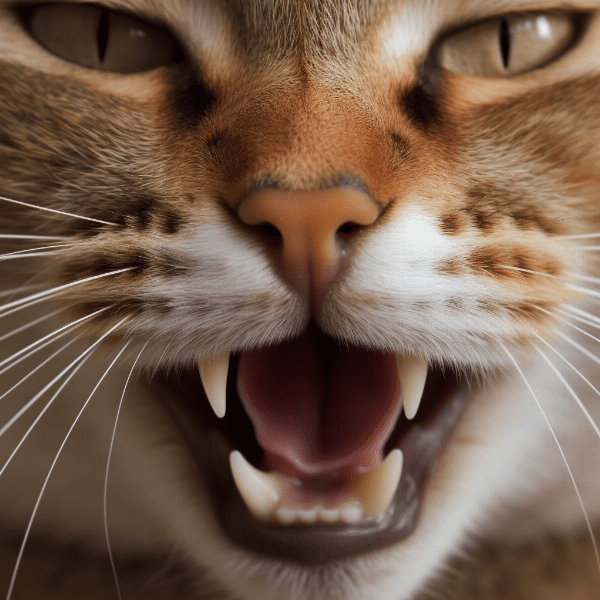
Symptoms of Feline Gingivitis
Feline gingivitis can cause a variety of symptoms, some of which may be subtle at first. Here are some of the most common symptoms of feline gingivitis to watch out for:

Diagnosis of Feline Gingivitis
Physical Examination
The first step in diagnosing feline gingivitis is usually a physical examination. During this exam, the veterinarian will inspect your cat’s mouth for signs of inflammation, bleeding, or other abnormalities. They may also take a closer look at your cat’s teeth and gums using a dental mirror or other specialized tools.
Dental X-Rays
In some cases, dental x-rays may be needed to help diagnose feline gingivitis. X-rays can help identify any underlying dental problems, such as tooth decay or damage to the jawbone, that may be contributing to the development of gingivitis.
Blood Tests
If your cat has advanced gingivitis or if there is a suspicion of an underlying medical condition, your veterinarian may recommend blood tests to help identify any underlying health problems. These tests can help diagnose conditions such as diabetes or kidney disease, which can contribute to the development of gingivitis.
Conclusion
In conclusion, diagnosing feline gingivitis requires a thorough physical examination, including an inspection of the teeth and gums, and may also involve dental x-rays or blood tests. If you suspect that your cat may have gingivitis, it’s important to seek veterinary care as soon as possible. Early diagnosis and treatment can help prevent more serious dental problems from developing and can ensure that your cat’s oral health remains in good condition.

Preventing Feline Gingivitis
Preventing feline gingivitis is the key to maintaining good oral health in your cat. Here are some steps you can take to prevent the development of gingivitis in your feline friend:
Regular Dental Cleanings
Regular dental cleanings are one of the most effective ways to prevent gingivitis in cats. Your veterinarian can perform professional cleanings, which involve removing plaque and tartar buildup from your cat’s teeth, and provide recommendations for at-home dental care.
Providing a Healthy Diet
Feeding your cat a healthy diet is also important in preventing gingivitis. A diet that is high in protein and low in carbohydrates can help reduce the formation of plaque on the teeth, while also providing essential nutrients for overall health.
Providing Toys for Dental Health
Providing toys that promote dental health, such as chew toys or dental treats, can also help prevent the development of gingivitis. These toys can help remove debris and plaque from your cat’s teeth and promote healthy chewing behavior.
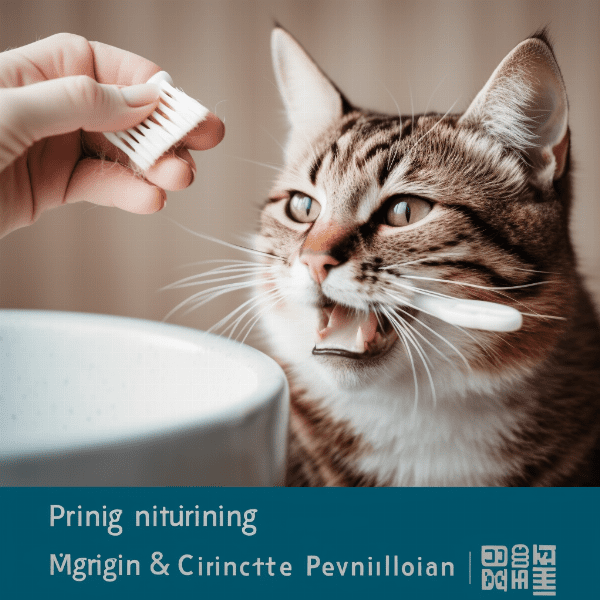
Treatment Options for Feline Gingivitis
If your cat has been diagnosed with gingivitis, there are several treatment options available to help manage the condition. Here are some of the most common treatment options for feline gingivitis:
Professional Dental Cleaning
One of the most effective treatments for feline gingivitis is a professional dental cleaning. This involves a thorough cleaning of your cat’s teeth, including the removal of plaque and tartar buildup, and can help reduce inflammation and prevent the development of more serious dental problems.
Antibiotics
If your cat has advanced gingivitis or if there is an underlying bacterial infection, your veterinarian may prescribe antibiotics to help treat the infection and reduce inflammation in the gums.
Anti-inflammatory Medications
Anti-inflammatory medications, such as corticosteroids, can also be used to help reduce inflammation in the gums and manage the symptoms of gingivitis.
Tooth Extraction
In some cases, advanced gingivitis may require tooth extraction to help prevent the spread of infection and reduce inflammation in the gums. This is usually a last resort treatment option and is only recommended in severe cases.
Home Care
In addition to professional treatment options, there are also several things you can do at home to help manage feline gingivitis. This may include brushing your cat’s teeth, providing dental treats or toys, and feeding a healthy diet.
Conclusion
In conclusion, there are several treatment options available for feline gingivitis, including professional dental cleanings, antibiotics, anti-inflammatory medications, tooth extraction, and home care. The best treatment option for your cat will depend on the severity of the condition and any underlying medical issues. By working with your veterinarian and providing regular dental care, you can help manage the symptoms of feline gingivitis and promote good oral health in your feline friend.
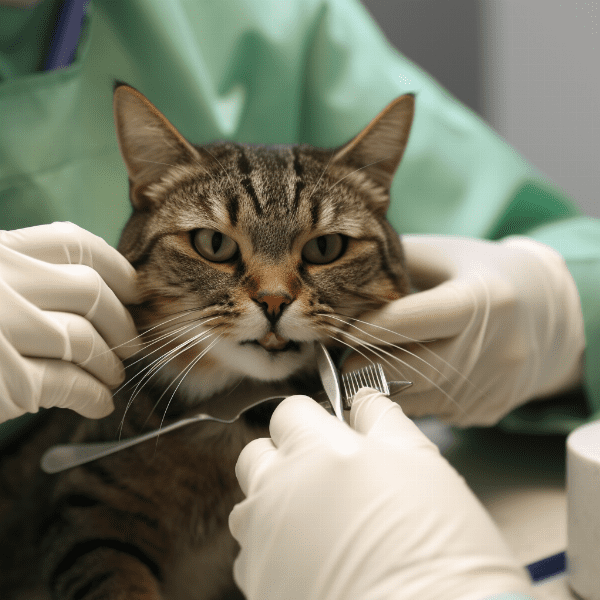
Home Care for Cats with Gingivitis
In addition to professional treatment options, there are several things you can do at home to help manage feline gingivitis and promote good oral health in your cat. Here are some tips for home care for cats with gingivitis:
Conclusion
In conclusion, home care is an important part of managing feline gingivitis and promoting good oral health in your cat. By brushing your cat’s teeth, providing dental treats or toys, feeding a healthy diet, scheduling regular dental checkups, and monitoring your cat’s oral health, you can help prevent the development of gingivitis and other dental problems. If you have any concerns about your cat’s oral health, be sure to consult with your veterinarian for personalized recommendations and care.

Complications of Feline Gingivitis
If left untreated, feline gingivitis can lead to several serious complications. Here are some of the most common complications of feline gingivitis:
Periodontitis
If gingivitis is left untreated, it can progress to periodontitis, a more serious condition that involves the loss of bone and tissue around the teeth. This can lead to loose teeth, tooth loss, and infection.
Tooth Resorption
Tooth resorption is a common complication of feline gingivitis, especially in older cats. This condition involves the gradual breakdown and absorption of the tooth structure, and can cause pain and discomfort in affected teeth.
Oral Infections
Untreated gingivitis can also lead to the development of oral infections, which can spread to other parts of the body and cause serious health problems.
Conclusion
In conclusion, feline gingivitis can lead to several serious complications if left untreated, including periodontitis, tooth resorption, oral infections, and difficulty eating. If you notice any symptoms of gingivitis in your cat, it’s important to seek veterinary care as soon as possible to prevent the development of these complications. With proper diagnosis and treatment, you can help manage the symptoms of feline gingivitis and promote good oral health in your feline friend.
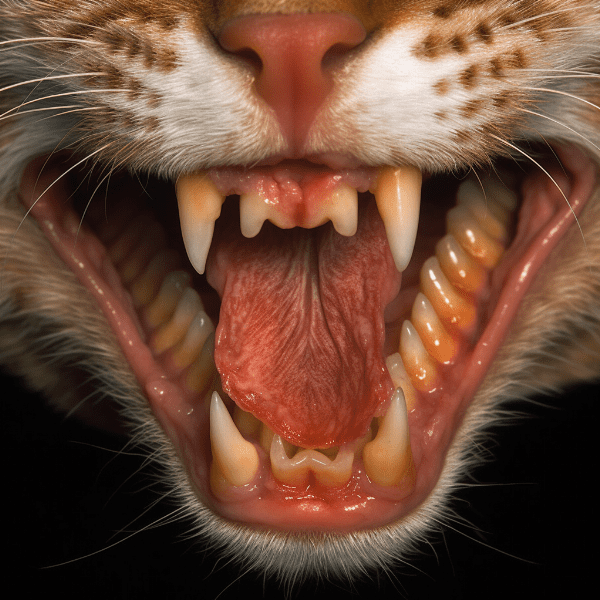
When to Consult a Vet for Gingivitis
If you suspect that your cat may have gingivitis, it’s important to seek veterinary care as soon as possible. Here are some signs that may indicate it’s time to consult a vet for gingivitis:
Bad Breath
Persistent bad breath is a common sign of gingivitis, and may be the first sign of a problem.
Red or Swollen Gums
Red or swollen gums are another common sign of gingivitis, and may indicate inflammation and infection.
Bleeding Gums
If your cat’s gums are bleeding, this is a sign that the gingivitis has progressed and may require professional treatment.
Difficulty Eating
If your cat is having difficulty eating, especially if they are avoiding certain foods or pawing at their mouth, this may indicate that they are experiencing pain or discomfort due to gingivitis.
Pawing at the Mouth
If your cat is pawing at their mouth or exhibiting other signs of discomfort, this may be a sign of gingivitis or other dental problems.
Conclusion
In conclusion, if you notice any signs of gingivitis in your cat, it’s important to seek veterinary care as soon as possible. With early diagnosis and treatment, you can help manage the symptoms of gingivitis and prevent the development of more serious dental problems. Your veterinarian can provide personalized recommendations for at-home dental care and professional treatment options to help promote good oral health in your feline friend.
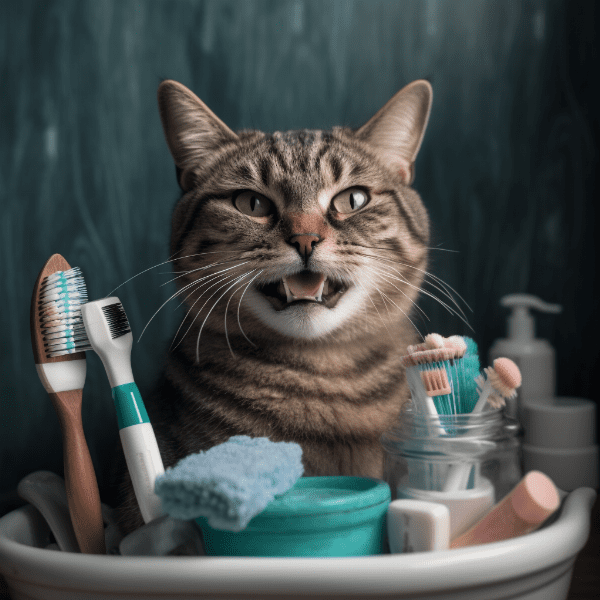
Conclusion: Caring for Your Cat’s Dental Health
Feline gingivitis is a common and potentially serious dental condition that can affect cats of all ages. By taking steps to promote good oral hygiene in your cat, you can help prevent the development of gingivitis and other dental problems. Here are some key takeaways for caring for your cat’s dental health:
Brush Your Cat’s Teeth
Brushing your cat’s teeth is an important part of home care for feline gingivitis. You can use a soft-bristled toothbrush and special toothpaste designed for cats to remove plaque and bacteria from your cat’s teeth.
Conclusion
In conclusion, feline gingivitis is a serious condition that requires proper diagnosis and treatment. By working with your veterinarian and providing regular dental care, you can help manage the symptoms of feline gingivitis and promote good oral health in your feline friend. With proper care and attention, you can help ensure that your cat’s oral health remains in good condition throughout their life.


